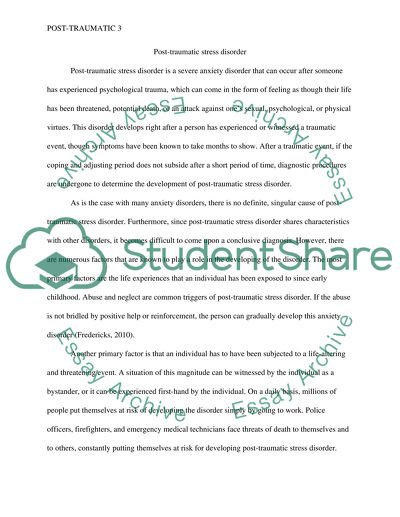Cite this document
(“Post-traumatic stress disorder Research Paper Example | Topics and Well Written Essays - 1000 words”, n.d.)
Retrieved de https://studentshare.org/psychology/1392362-psychological-disorders
Retrieved de https://studentshare.org/psychology/1392362-psychological-disorders
(Post-Traumatic Stress Disorder Research Paper Example | Topics and Well Written Essays - 1000 Words)
https://studentshare.org/psychology/1392362-psychological-disorders.
https://studentshare.org/psychology/1392362-psychological-disorders.
“Post-Traumatic Stress Disorder Research Paper Example | Topics and Well Written Essays - 1000 Words”, n.d. https://studentshare.org/psychology/1392362-psychological-disorders.


